07 May PAINTING UNDER THE MAGNOLIA

As an exercice of reflection about painting, every genre, portrait, self-portrait, still life or landscape, it serves. In the end, the painter will consider the typic questions of all Art: what is, serves to what, its validity in a technological moment, the sense of the individuality and the language, and son on.
Without splitting hairs, as a painter, and at this very moment after almost twenty years of working on the inside of the atelier, entangled in compositions with predominance of the human figure and sizes that force me to live practically hanging from a scaffold, I have given me a breathing space of assembling my stand outdoors, in my own garden, wanting nothing else than letting myself be flooded by the light and colourful of the spring and feel in my hand the touch of my old painter’s palette from nature. I want to share with you, thanks to this likeable toy of the “net”, the experience:
Obviously, the first thing I have done is to see. Then, questions have come: what do you want to paint, why, to what, whose responses of course cover entire volumes of History of the Art and Philosophy in general.
It is really not what I am about. I prefer to trust everything to the intuition and let me take away by that nature tells me. Under the full bloom magnolia, the exuberance of a somewhat savage garden, the luxuriance of the bamboos, and behind this the large orange grove that arrives to the foothills of the mountain ranges…and all that under the blue sky of the Mediterranean, the first thing has been to recognize my helplessness of capturing and transforming in painting all this splendour. After that, without falling in mysticisms, a sense of reverence and gratitude for existing and seeing the beauty, maybe also an impulse of love without apparent response.
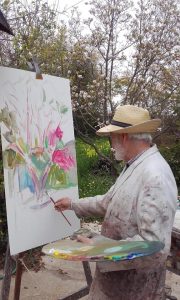

But, of course, after that glorious moments, takes action the rushed need of the painter of expressing. And then appears the will, the illusion, and the language (I mean, the technique that I am going to explain).
In my case, the facing with the natural often is chaotic, beginning with painting with big spots of colour that, on the contrary with is preached by the academic cannons, are pasty, I correct, move, scrape, remove, superimpose, searching a sort of dynamism of volumes and the contrast of the colours. In some techniques as the acrylic painting, the tempera, the emulsified mixed techniques and the encaustic, these manipulations are easy because of their fast dry. With the oils, even using varnishes as the alkyd resins (which dry faster), it is more complicate but I can be useful using absorbent preparations as the traditional “gesso”, textured finished support, imprimaturs, and so on.

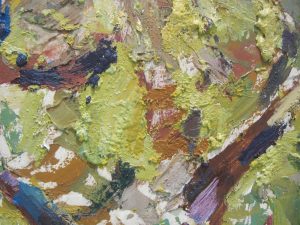
Apart from techniques, here are some considerations about the landscape that you are on the brink of the painting:
-the relationship between the humankind and Nature and their necessity of reordering and spiritualizer
-That you see, that you feel, that you thing you can contribute
-watch the landscape as a source of symbols; the elevation of a mountain, for instance, the bravery of a frizz sea, a stormy sky, the haze, the wind, the delicacy of a flower
-think in in the irruption of the picturesque, I mean, the taste for shocking effects and the extravagance of the landscape
-consider the study of a landscape as a kind of scientific knowledge, the botany, the geology, the atmospheric changes…
-the landscape as the background of the human action and the historic facts. The same humanisation for he vegetal world, read the Quietists, listen to Mahler…
When you begin painting it is worth thinking in all this…but no in excess because you could run the risk of paralyzing the impulse of expressing and your freedom of the artist. The goal is always to make a painting. Of course, if you consider yourself a professional landscape painter and furthermore show off of can painting beautiful little landscapes and you even have success with them, do not you follow me, continue with your recipes to get the most.
The aspiration of the very artist is infinite and therefore is doomed to failure. In this way Van Gogh or Cézzane understood it, for instance, but do not we fall in the absolute hopelessness: paint, give yourself to your art, feel…; somewhere, sometime, somebody will be that will understand you and will react, and in the latter case, the enjoyment of the experience, nobody can take it from you.

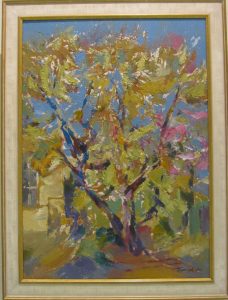
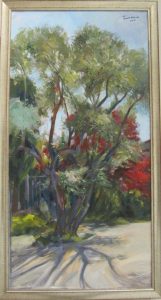
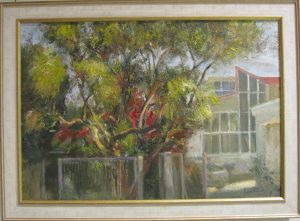




No Comments